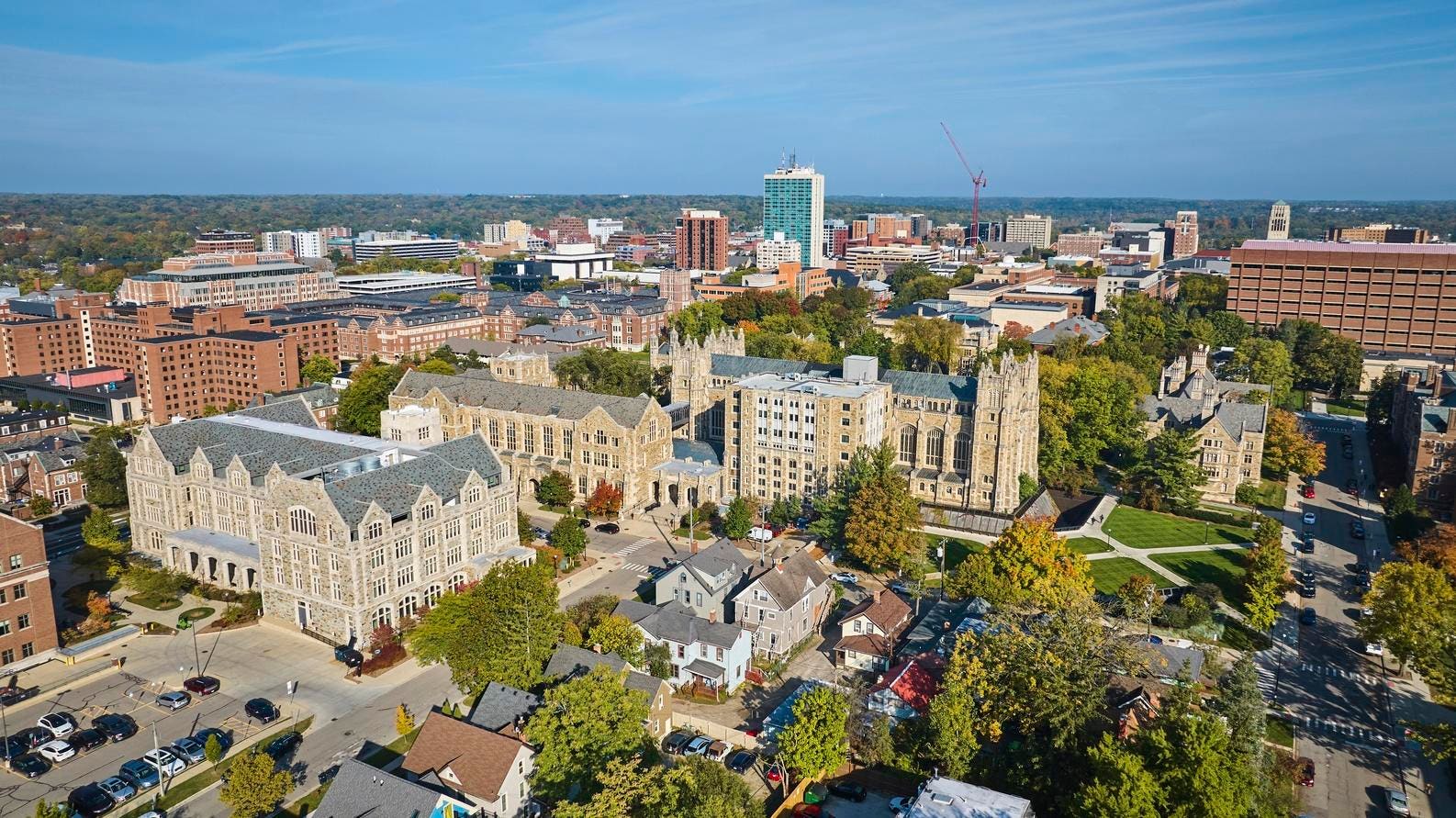The University of Michigan leads the nation in expenditures for social science research,
getty
Where is leading social science research being conducted in the U.S.? Which universities lead the way in fields such as anthropology, economics, political science, sociology, and psychology? One key metric for answering those questions can be found in the Higher Education Research and Development Survey.
Because many of the most pressing problems facing the nation today involve patterns of human behavior and the social forces affecting them, research in psychology and the social sciences continues to be a vital source of information about these issues.
Whether it’s the proliferation of misinformation, the spread of conspiracy theories, increases in intergroup and international tensions, the rise of antidemocratic ideologies, the causes and consequences of economic inequality, the development of preventable diseases, the conservation of the environment or the control of crime, the social and behavioral sciences provide an important means for understanding and possibly reducing these problems.
The latest HERD Survey, sponsored by the National Science Foundation’s National Center for Science and Engineering Statistics, presents R&D expenditure data for fiscal year 2023. These are the most up-to-date expenditure figures, collected from 914 universities and colleges that grant a bachelor’s degree or higher and spent at least $150,000 in R&D in the prior fiscal year.
Total R&D expenditures at American colleges and universities topped $108.8 billion in FY 2023. Of that total, universities spent a bit more than $3.6 billion on social science research and $1.6 billion on psychological research. Both categories increased over the prior year with social science research spending up by 14%, and psychology research expenditures gaining 13%.
Below are the top 10 universities ranked by their combined research expenditures in four social science disciplines (anthropology, economics, political science and government, and sociology/demography/population studies) plus one category of miscellaneous social sciences). The figures are in millions of dollars.
University of Michigan, Ann Arbor: $217.5
Harvard University: $169.2
University of North Carolina, Chapel Hill: $95.7
Arizona State University: $93.1
University of California, Berkeley: $87.8
University of California, Los Angeles: $86.0
Princeton University: $83.8
University of Southern California: $81.7
University of Wisconsin, Madison: $76.0
George Mason University: $73.1
The data also can be broken out by the top five schools in individual disciplines constituting the overall social science funding category.
Anthropology: Arizona State University; University of Michigan; City University of New York Graduate Center; Harvard University; and Colorado State University.
Economics: George Mason University; University of Michigan; Massachusetts Institute of Technology; University of California, Berkeley; and the University of Southern California.
Political Science and Government: Harvard University; Georgetown University; University of Michigan; Princeton University; and Arizona State University.
Sociology, Demography and Population Studies: University of North Carolina, Chapel Hill; Pennsylvania State University/Hershey Medical Center; Harvard University; University of Michigan; and the University of Pennsylvania.
Miscellaneous Social Sciences: University of Michigan; UCLA; University of Maryland; Harvard University; and the University of Wisconsin, Madison.
The top 10 universities for research expenditures in psychology were (in millions):
University of North Carolina, Chapel Hill: $56.6
Uniform Services University of Health Sciences: $47.9
Penn State University/Hershey Medical Center: $41.3
Florida International University: $41.1
University of Minnesota, Twin Cities: $33.7
University of Connecticut: $30.9
University of Georgia: $30.1
New York University: $26.6
Boston University: $26.4
University of Michigan, Ann Arbor: $23.5
Looking more closely at the results by disciplines, here are some other findings:
First, public universities were dominant. In both the social sciences and psychology, eight of the top ten institutions were public universities.
Across the various categories, the University of Michigan topped the list, attaining top-10 status in both psychology and the combined social sciences. It also ranked in the top five in all six of the component social science areas.
The University of North Carolina, Chapel Hill was in the top 10 for both psychology and combined social sciences.
Harvard University and Arizona State University placed in the top five in two or more or the individual social sciences.
The quality of academic research can be measured in several ways – publications in refereed journals, the number of Ph.D.’s awarded, various kinds of citation counts, scholarly awards and memberships in scholarly societies, commercialization of intellectual property, and the post-degree careers of an institution’s students. All of those measures are important indicators of research impact.
However, research expenditures have a particular value in judging an institution’s overall efforts and contributions to a research field for a couple of reasons.
First, because most research grant funds are awarded through a competitive, peer review process; R&D expenditures reveal an expert consensus about the perceived value of the proposed work. Second, expenditures allow a direct, objective comparison of the vitality of a given research area across different universities. Beyond the sheer dollars represented by a university’s sponsored research program, the most important consideration is ultimately how much new knowledge it helps generate.
